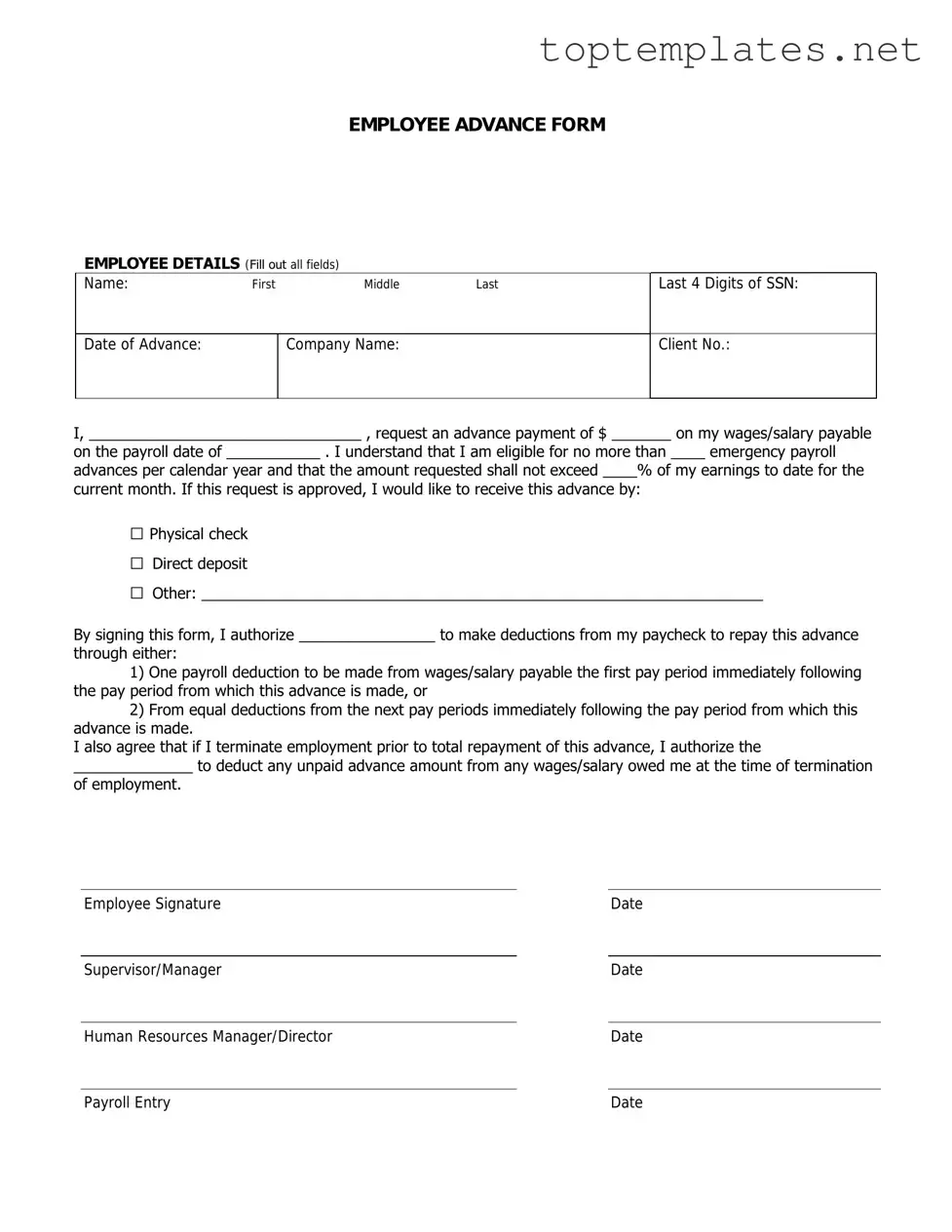What is an Employee Advance form?
An Employee Advance form is a document used by an employee to request a short-term loan from their employer. This loan is typically deducted from future paychecks. The form should clearly state the amount requested, the reason for the advance, and the proposed repayment schedule.
Who can request an Employee Advance?
Generally, any full-time employee who has completed a certain period of employment, often 90 days, is eligible to request an Employee Advance. However, eligibility requirements may vary based on the employer's policies.
How does repayment work for an Employee Advance?
Repayment terms for an Employee Advance are usually defined by the employer's policies. Typically, the advanced amount is deducted from the employee's future paychecks over a specified period. The repayment schedule, including the deduction amount per paycheck, should be outlined in the Employee Advance form agreement.
Are there any interest charges on an Employee Advance?
Most employers do not charge interest on Employee Advances as they are not considered a traditional loan. However, policies can vary between different employers. It’s recommended to review the terms and conditions specified in the Employee Advance form or policy document.
What happens if an employee leaves the company before repaying the advance?
If an employee resigns or is terminated before fully repaying the Employee Advance, the remaining balance is typically due immediately. The employer may deduct the outstanding amount from the employee's final paycheck. Specific details regarding this scenario should be outlined in the terms of the Employee Advance agreement.

